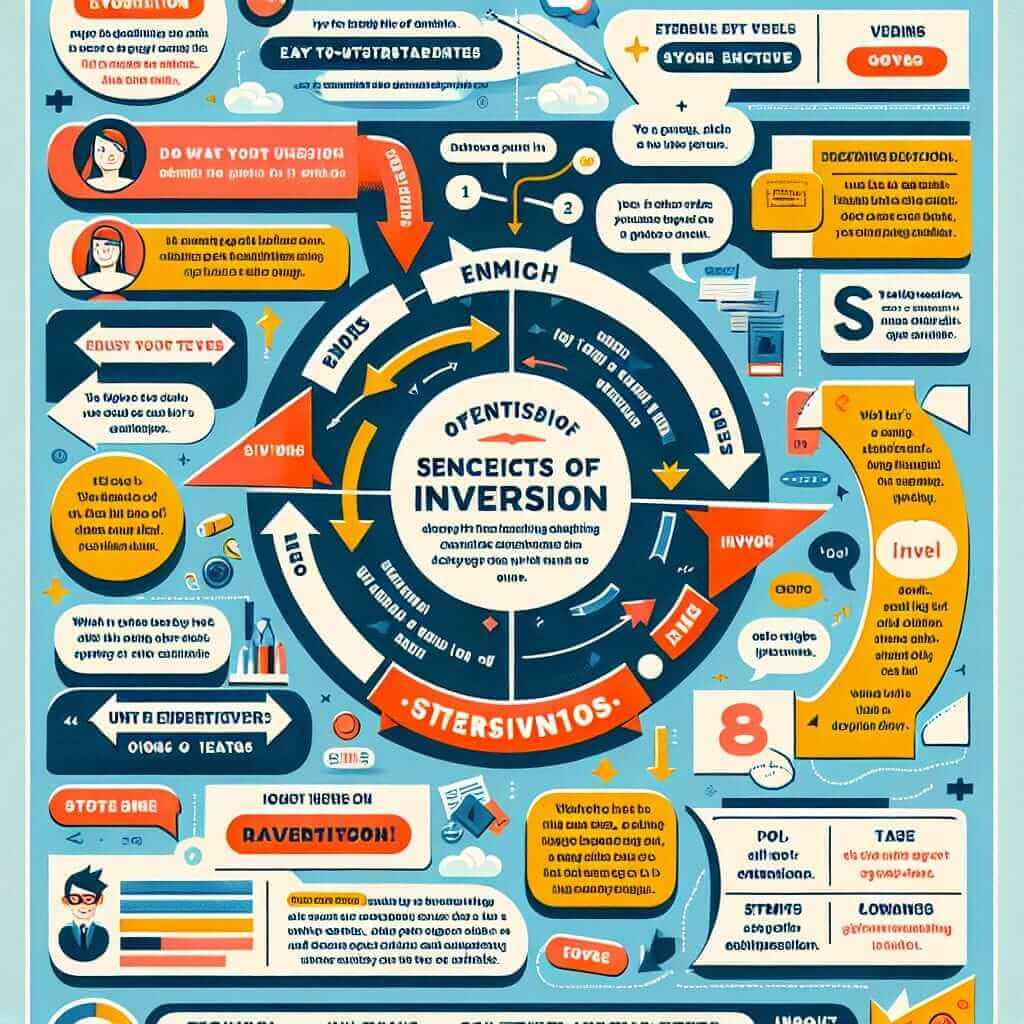“So difficult was the exam that many failed.” This sentence might sound unusual, but it’s grammatically correct and demonstrates a powerful technique to elevate your IELTS writing: inversion. This structure adds sophistication and emphasis to your sentences, showcasing a strong command of English grammar. Let’s explore how to use inversion effectively in your IELTS writing and speaking.
Examples of Inversion in IELTS Contexts:
- Writing Task 2: “Not only does technology enhance communication, but it also revolutionizes education.” (Inversion used to emphasize the multiple benefits of technology)
- Speaking Part 3: “So fascinating was the documentary that I watched it twice.” (Inversion used to express strong interest)
- Writing Task 1: “Rarely had the city witnessed such a dramatic increase in tourism.” (Inversion used to highlight the unusual nature of the trend)
Understanding Inversion and its Significance in IELTS
Inversion, in simple terms, is reversing the typical subject-verb order in a sentence. This technique is particularly useful in emphasizing a certain part of the sentence and adding a touch of formality to your language. While not overly common in everyday speech, mastering inversion demonstrates to the IELTS examiner that you possess a high level of grammatical range and accuracy, contributing significantly to a band score of 7 or higher.
The Mechanics of Inversion
Inversion typically follows these formulas:
1. Negative Adverbial + Auxiliary Verb + Subject + Main Verb
Example: Never had I seen such a beautiful sunset.
2. Only + Adverbial Phrase/Clause + Auxiliary Verb + Subject + Main Verb
Example: Only after years of practice did he become a master chef.
3. So + Adjective/Adverb + Auxiliary Verb + Subject + Main Verb
Example: So captivating was her voice that the entire audience was mesmerized.
4. Adverbial of Place/Direction + Verb of Movement + Subject
Example: Down came the rain in torrents.
Analysis:
- Notice how the auxiliary verb (“had,” “did,” “was,” “came”) is placed before the subject in each example.
- The main verb remains in its base form after the auxiliary verb.

Applying Inversion in IELTS Writing
Writing Task 1 (Describing Trends):
Instead of: “The price of oil rarely increased so rapidly.”
Use Inversion: “Rarely had the price of oil increased so rapidly.”
Writing Task 2 (Expressing Opinions):
Instead of: “Technology has not only transformed communication but also revolutionized education.”
Use Inversion: “Not only has technology transformed communication, but it has also revolutionized education.”
Applying Inversion in IELTS Speaking
Speaking Part 2 (Describing an Experience):
Instead of: “The concert was so impressive that I couldn’t forget it.”
Use Inversion: “So impressive was the concert that I couldn’t forget it.”
Achieving Higher Band Scores with Inversion
To truly impress the IELTS examiner, consider these strategies:
- Variety is Key: Don’t overuse inversion. Sprinkle it judiciously throughout your writing and speaking.
- Context is Crucial: Ensure that the context is appropriate for using inversion. It’s often best suited for formal or literary styles.
Common Errors to Avoid
- Incorrect Verb Placement: Remember the auxiliary verb comes before the subject.
- Overuse: Using inversion too frequently can sound unnatural and forced.
Conclusion
Inversion is a powerful tool for adding emphasis and sophistication to your IELTS writing and speaking. By understanding its structure and practicing its use, you can confidently demonstrate your mastery of English grammar and boost your band score. Remember, practice makes perfect! Continue to experiment with inversion in various IELTS contexts to refine your skills and impress the examiners.